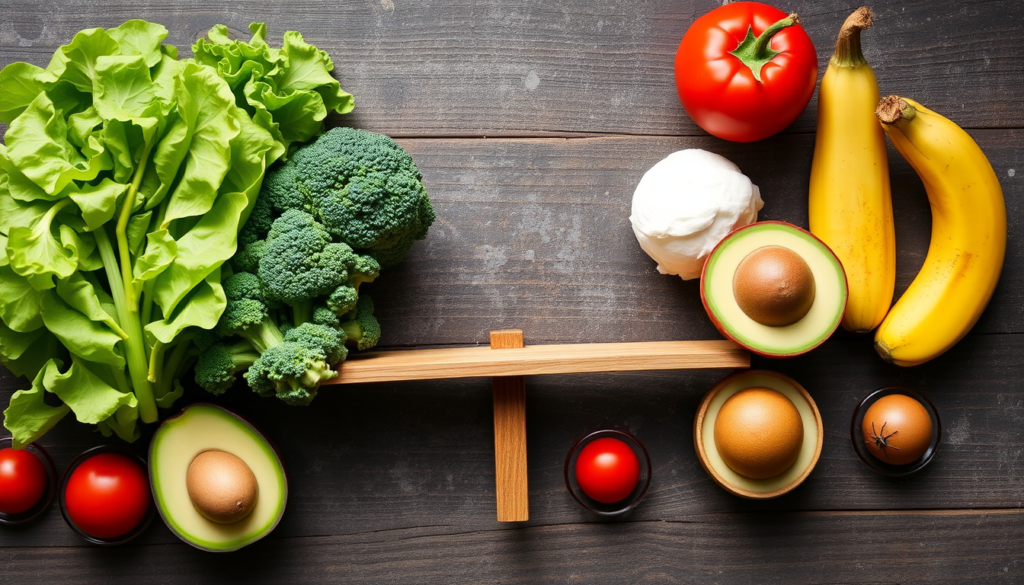In today’s fast-paced world, maintaining a healthy diet can often feel overwhelming. However, the concept of a balanced plate can simplify the process of meal planning and portion control. By focusing on the right proportions of various food groups, anyone can create nutritious and satisfying meals. This article will guide you through the essential components of a balanced plate, providing a clear visual representation and tips for achieving a healthful diet.
The Importance of a Balanced Diet
A balanced diet is crucial for overall health and wellness. It not only helps maintain a healthy weight but also provides the necessary nutrients your body needs to function effectively. Here are some key benefits of a balanced diet:
- Promotes optimal growth and development
- Boosts the immune system
- Improves mental health and cognitive function
- Reduces the risk of chronic diseases
- Enhances energy levels and physical performance
Understanding the Components of a Balanced Plate
A balanced plate should consist of a variety of food groups in the right proportions. The typical guideline suggests dividing your plate into sections that include:
1. Vegetables
Fill half of your plate with a variety of colorful vegetables. Not only are they low in calories, but they are also rich in essential vitamins, minerals, and dietary fiber.
- Leafy greens (spinach, kale)
- Cruciferous vegetables (broccoli, cauliflower)
- Root vegetables (carrots, sweet potatoes)
- Other vegetables (bell peppers, zucchini)
2. Proteins
One-quarter of your plate should be dedicated to protein-rich foods, which are vital for muscle growth, repair, and overall bodily functions. Proteins can come from both animal and plant sources:
- Lean meat (chicken, turkey)
- Fish and seafood (salmon, shrimp)
- Plant-based proteins (tofu, beans, lentils)
- Nuts and seeds (almonds, chia seeds)
3. Grains
The remaining quarter of your plate should contain whole grains, which are an excellent source of carbohydrates, fiber, and important nutrients.
- Brown rice
- Quinoa
- Whole grain bread or pasta
- Oats
4. Healthy Fats
In addition to dividing your plate into the main food groups, incorporating healthy fats is key. Fats help absorb vitamins and provide energy. Sources of healthy fats include:
- Olive oil
- Avocados
- Nuts and seeds
- Fatty fish (such as salmon and mackerel)
Tips for Creating Your Balanced Plate
To successfully create a balanced plate and develop healthier eating habits, consider the following tips:
- Plan your meals in advance to ensure you include a variety of food groups.
- Experiment with new vegetables, grains, and protein sources to keep your meals exciting.
- Use visual cues to gauge portion sizes, such as dividing your plate as explained above.
- Limit processed foods and added sugars to maintain the integrity of your balanced meal.
- Stay hydrated with plenty of water throughout the day.
Visual Guide to a Balanced Plate
Here’s a simple visual representation of how a balanced plate may look:
 Image: A balanced plate divided into vegetables, proteins, and grains.
Image: A balanced plate divided into vegetables, proteins, and grains.
Frequently Asked Questions
1. How many servings of vegetables should I aim for each day?
Generally, it’s recommended that adults consume at least 2.5 to 3 cups of vegetables daily. Aim to include a variety of colors to maximize nutrient intake.
2. Can I include dairy in my balanced plate?
Yes, incorporating dairy or dairy alternatives can be beneficial. Consider options like yogurt or cheese for added calcium and protein. Aim for low-fat or non-fat versions when possible.
3. What if I follow a vegetarian or vegan diet?
A well-planned vegetarian or vegan diet can still meet all your nutritional needs. Focus on a variety of plant-based proteins, whole grains, and an abundance of fruits and vegetables.
4. How can I get my kids to eat a balanced plate?
Get kids involved in meal planning and preparation. Offer a variety of foods they can choose from, and make meals colorful and fun. Positive reinforcement can also help them enjoy healthy foods.
Conclusion
Creating a balanced plate simplifies the journey to healthier eating by helping you understand the proportions of various food groups. By focusing on incorporating a variety of vegetables, proteins, grains, and healthy fats, you can enjoy delicious meals that nourish your body and promote overall health. Remember, small but consistent changes can lead to long-term success, so start today and enjoy the benefits of a balanced plate!



